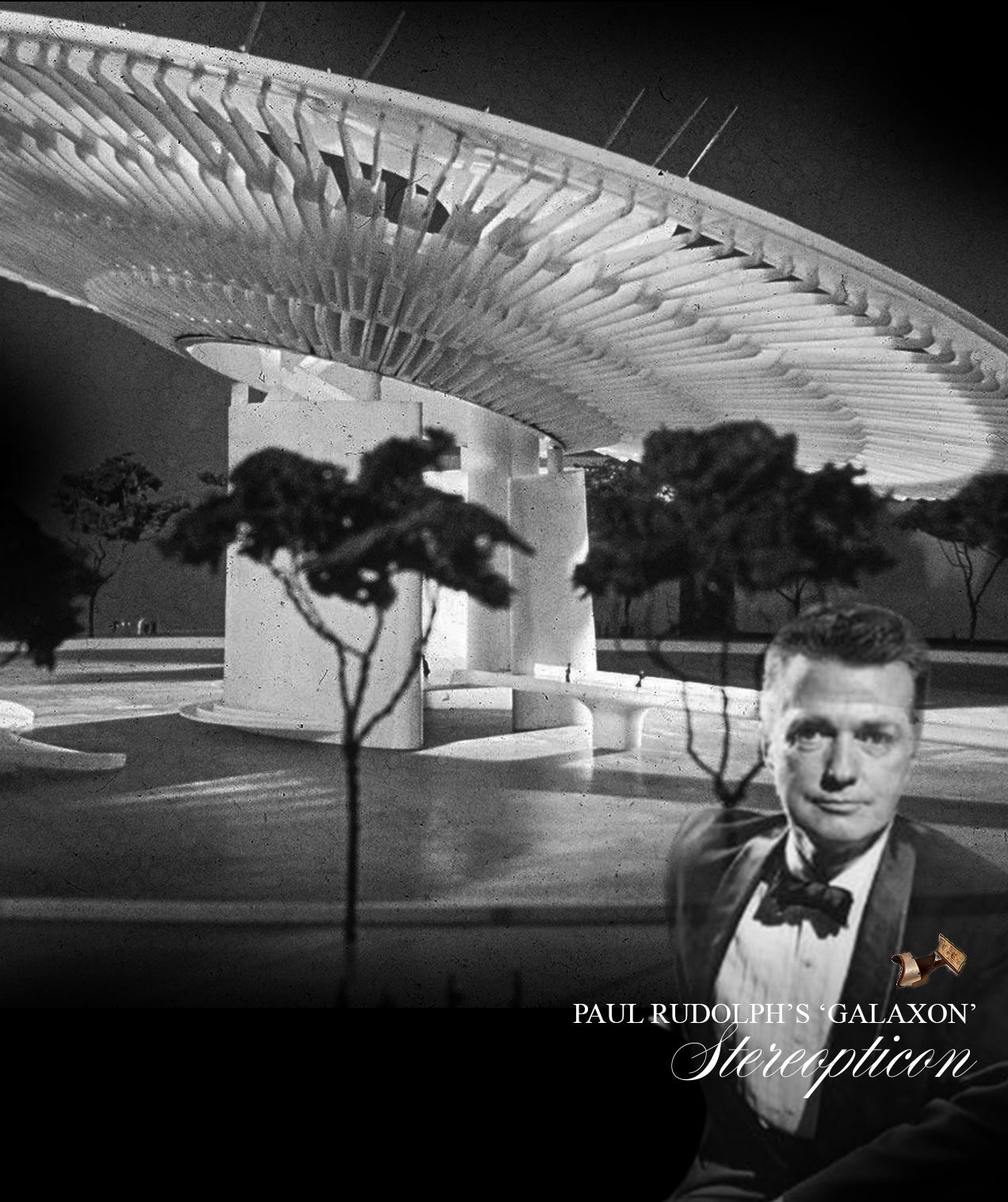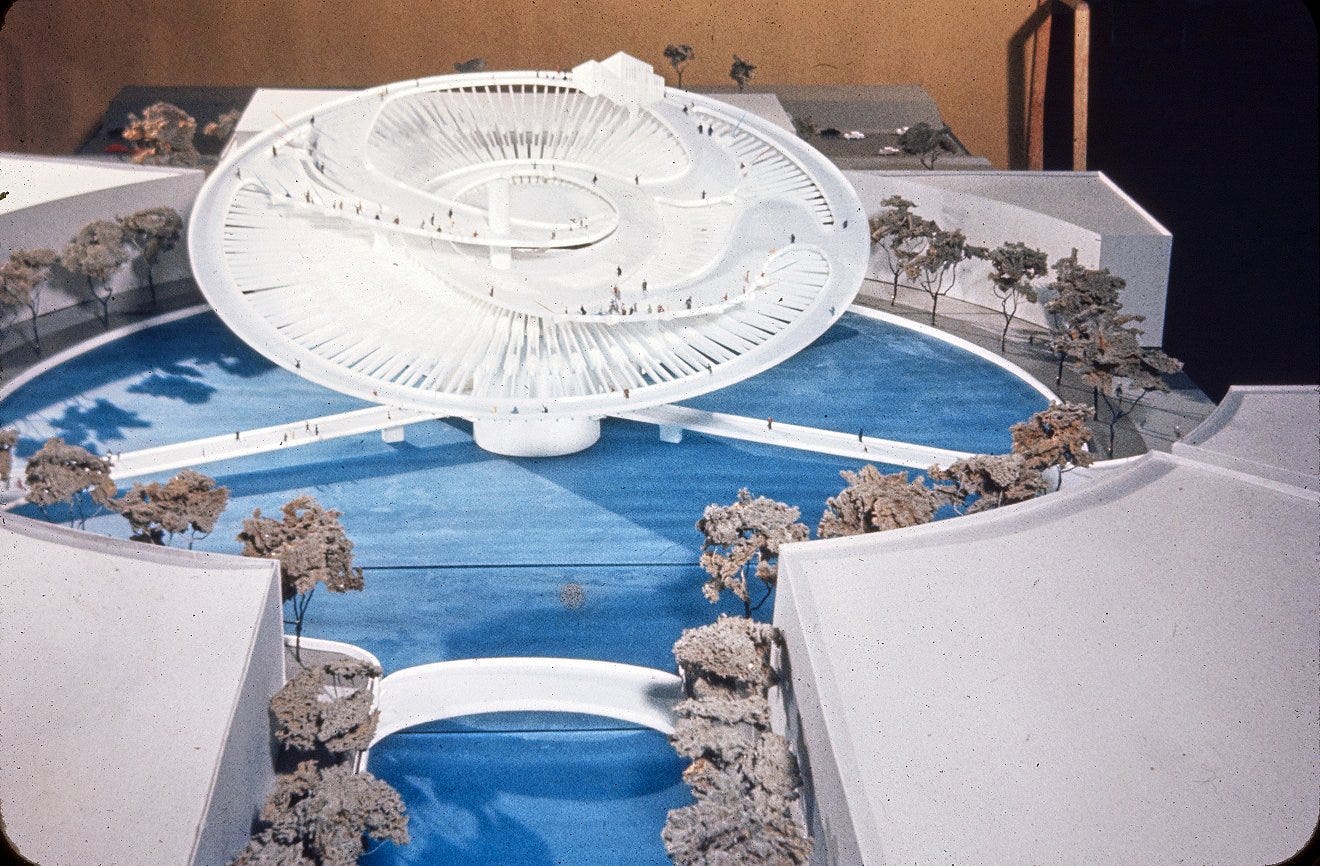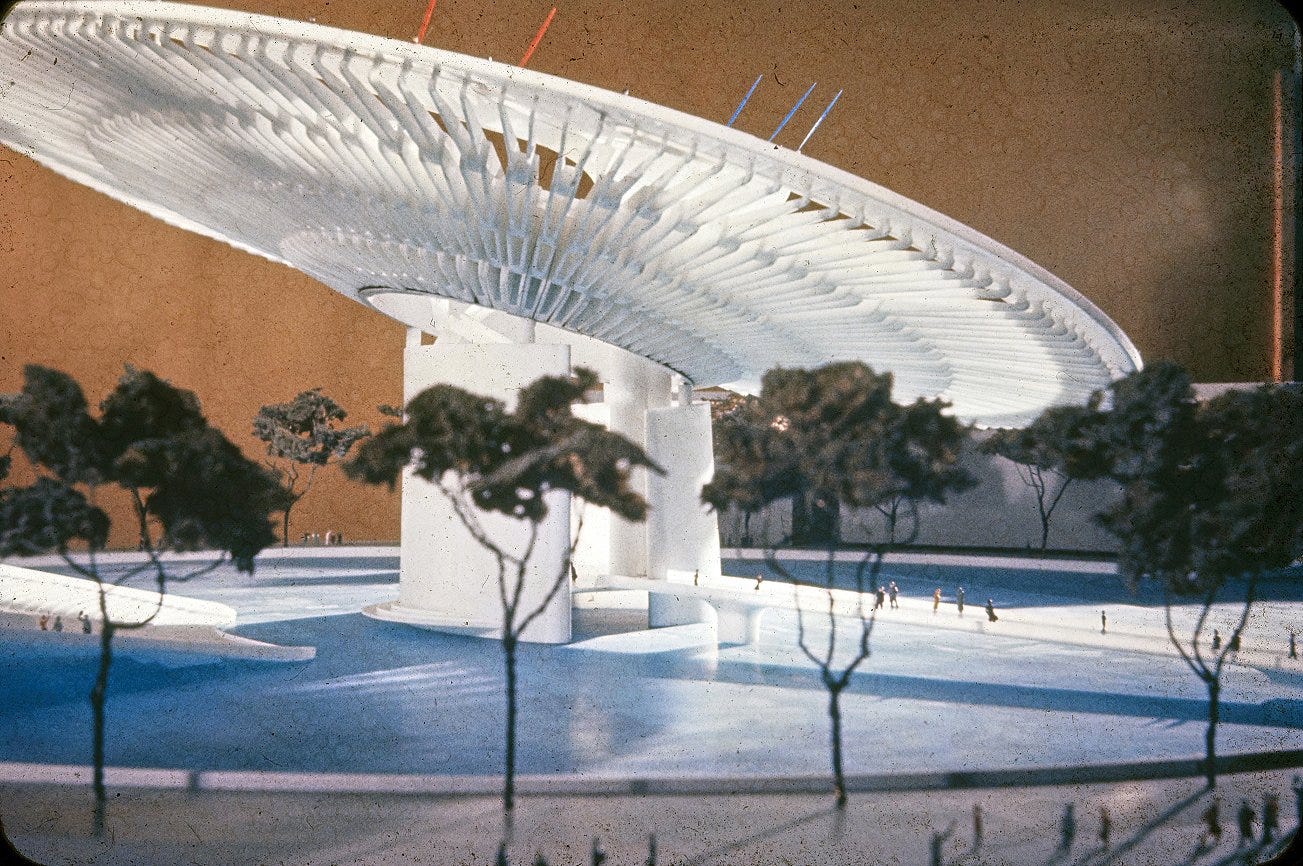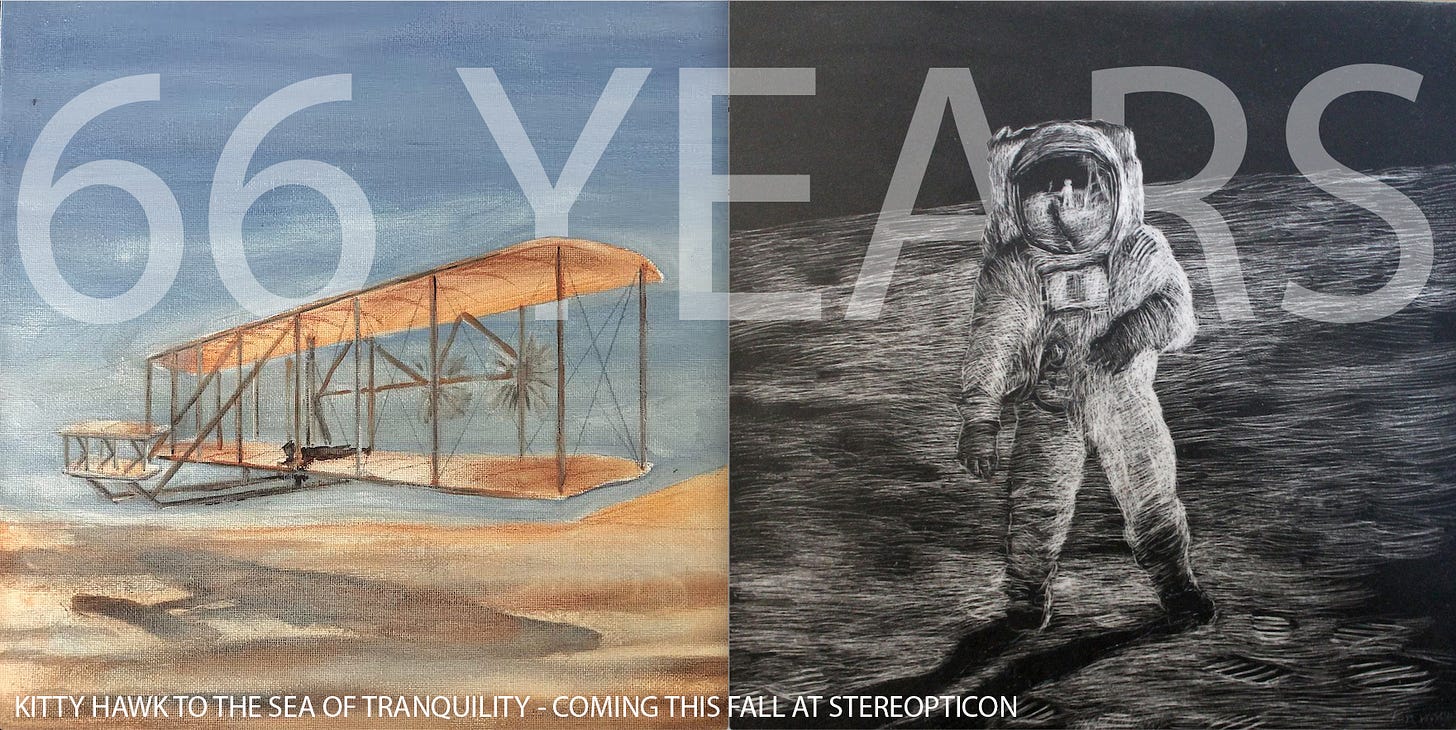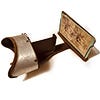‘Galaxon’ design for the theme pavilion of the 1964 New York World’s Fair by Paul Rudolph. — Library of Congress
By Bob Kirchman
As preparations began for the 1964 - 1965 New York World’s Fair, Architect Paul Rudoph submitted this proposal:
The design is for the 1964/1965 New York World’s Fair. It is to serve as the centerpiece of the fairgrounds and as a visual logo for fair publicity, similar to the Trylon and Perisphere of the 1939 World’s Fair which were once standing in the same location.
Rudolph’s design is prepared for the Portland Cement Association and features a giant 160-foot high 340-foot in diameter, saucer-shaped concrete structure with stations for star viewing and tilted at an 18-degree angle to offer an optimum view of the heavens held up by two curved walls rising from a circular lagoon. Visitors are lifted to the center of the “saucer” by escalators and elevators inside the curved supporting walls. From the central ring they would walk outward over curved ramps to a constantly moving sidewalk on the disc’s outside perimeter. A stage is projected from one of its two supporting walls and a restaurant, planetary viewing station and other educational or recreational features can be located at points along the top surface to make it an entertainment center.
The Portland Cement Association calls it “a dramatic and imaginative design in concrete.” in the July 1961 edition of the Architectural Record.
The Galaxon is among several designs displayed at an exhibition in New York of the use of concrete in so-called “visionary” architecture. — Paul Rudolph Institute
The design was brilliant, but Robert Moses hated it. Moses, who as Parks Commissioner, had created the 1939 fair out of the Flushing Ash Dump, was now head of the 1964 -1965 fair and he expressed distain for “abstractions that no-one would understand.” The symbol of the fair would be the Unisphere, designed by Gilmore D. Clarke and Peter Müller-Munk. Ironically, Müller-Munk did not like the Unisphere, and always downplayed his part in creating it. The German-born artisan/designer likely felt as if he were participating in creating a monumental example of kitsch.
The Unisphere would go on to become a beloved icon, much like the Eiffel Tower had in the past, and Rudolph’s Galaxon would be relegated to the world of unbuilt architecture. Still, it represents a powerful expression of a time when humankind reached for the stars.
CONTINUING THIS FALL AT STEREOPTICON
Kitty Hawk to the Sea of Tranquility, The Journey, Continuing this Fall. — Bob Kirchman



